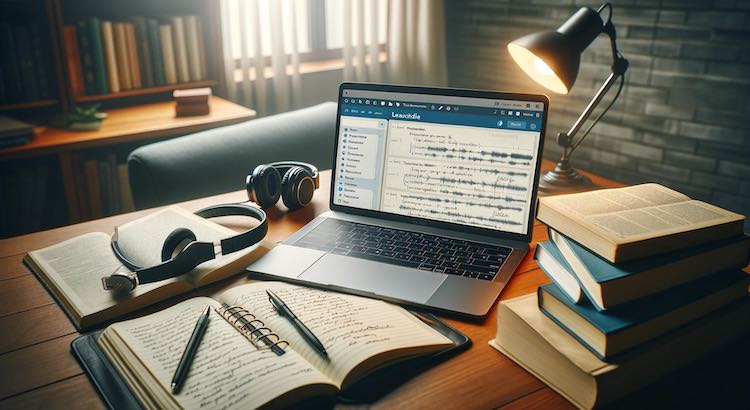How to Transcribe Microsoft Teams Meetings: Step-by-Step Guide
Microsoft Teams plays a key role in many workplaces, allowing teams to collaborate online. Transcribing meetings helps create accurate records, supports accessibility, and improves productivity. This guide shows you how to transcribe Microsoft Teams meetings in easy steps.
Why Transcribe Your Microsoft Teams Meetings?
- Greater Clarity: Written transcripts prevent misunderstandings and let everyone review what was discussed.
- Accessibility and Inclusivity: Transcripts help colleagues who are hard of hearing or speak English as a second language.
- Productivity Boost: Searching a transcript is faster than replaying meeting videos or audio.
Preparing for Meeting Transcription
- Check Permissions: Make sure your account and organization settings allow you to record and/or transcribe meetings.
- Stable Internet: Good internet quality means better audio for transcription.
- Minimize Background Noise: Ask participants to mute themselves when not speaking and find a quiet place.
Recording Your Microsoft Teams Meeting
- Start or Join the Meeting: Open Microsoft Teams and begin your meeting.
- Meeting Controls: Click the three dots “More Actions” icon in the meeting toolbar.
- Select “Start Recording” or "Start Transcription": Choose the option you need. Sometimes these features appear separately based on your organization's setup.
- Consent: All participants will see a notification that the meeting is being recorded or transcribed.
- Stop Recording: Click the three dots again and select “Stop Recording” when finished.
Where Are Recordings Saved? Teams often saves recordings to SharePoint or OneDrive. Afterward, you’ll get a link to download or share the file.
Note: If recording isn’t allowed, you can use a screen recorder (with permission), or enable Teams’ live transcription.
Enable Live Transcription in Teams (Optional)
Many Microsoft 365 licenses allow live transcription for Teams meetings. This feature provides real-time text as people speak.
- Click the "More Actions" (three dots) button during the meeting.
- Select “Start Transcription,” if available. The transcription starts right away.
- Attendees can view the transcript in a side panel or minimize it on their screen.
- Live transcription might not capture everything perfectly, especially if there are strong accents or background noise (Microsoft, 2023).
- You can save the live transcript, but it may need editing for accuracy.
Choosing a Transcription Method After the Meeting
Once you have your Teams recording or live transcript, choose one of these methods to get a polished transcript:
1. Automated Transcription Tools
- Pros: Fast and cost-effective for large amounts of content.
- Cons: May need lots of editing for mistakes, mislabels, or technical words (learn about automated transcription).
2. Professional Transcription Services
- Pros: High accuracy; best for key meetings, legal matters, or records that need to be perfect (order professional transcription).
- Cons: Costs more than automated options, and turnaround times may vary (see pricing).
3. Manual Transcription
- Pros: Full control over the result; no extra cost but your time.
- Cons: Time-consuming and more likely to include typos or human errors.
How to Upload and Retrieve Your Transcription
- Sign Up: Create an account on your chosen platform (manual, automated, or professional service).
- Upload Recording: Add your Teams recording from your computer or by pasting a share link.
- Set Preferences: Select language, speaker labels, and formatting (such as timestamps).
- Payment/Confirmation: Pay (if required), or submit the order. There are free tools, but professional services—like GoTranscript—offer more features (see proofreading services).
- Review Transcript: Check and proofread the transcript for correct names and terminology.
How to Store and Share Your Transcript Efficiently
- Cloud Storage: Save transcripts to services like SharePoint, OneDrive, or your project software for easy access.
- Share with Team: Make links available to everyone who needs to review, learn, or complete action items (order transcription easily).
- Project Linking: Attach transcripts to project folders, meeting video files, or task lists.
Best Practices for Microsoft Teams Transcripts
- Use Speaker Labels: Name each speaker to help readers follow the conversation.
- Add Timestamps: Provide time markers to revisit key topics quickly.
- Proofread Carefully: Review transcripts for specialized terms or mistakes (transcription proofreading).
Common Scenarios for Teams Transcription
- Team Meetings: Quickly identify decisions or assignments for follow-up.
- Training Sessions: Share transcripts as learning material.
- Client Meetings: Keep reliable, time-stamped records of agreements and next steps.
Frequently Asked Questions
Do all Microsoft Teams plans include recording and transcription?
No, not all plans include these features. You need a Microsoft 365 plan that supports meeting recording and transcription. Check with your IT admin or Microsoft support for details.
Can everyone see the live transcription during a meeting?
Yes, if it is enabled, all participants can see the transcript on their screens, but they can collapse it if they choose.
How accurate is the Teams live transcription?
Teams live transcription is accurate in quiet settings with clear speech, but accuracy drops with background noise or multiple speakers (Microsoft, 2023).
Can I get a Teams meeting transcribed in other languages?
Teams offers live transcription in several languages, but not all. For other languages, use a third-party service—like audio translation services.
Conclusion
Transcribing Microsoft Teams meetings keeps your company transparent, productive, and inclusive. Use Teams’ built-in options, automated tools, or a professional solution like GoTranscript’s transcription services to get a reliable, accurate record. Ready to simplify your workflow? GoTranscript makes it easy to order fast and precise transcriptions for all your Microsoft Teams meetings.
With steps like recording, choosing the right transcription method, reviewing, and sharing, you’ll always have a clear outline of your discussions. Save time, reduce confusion, and support every member of your team by transcribing your Microsoft Teams meetings today!



















 Verified Order
Verified Order